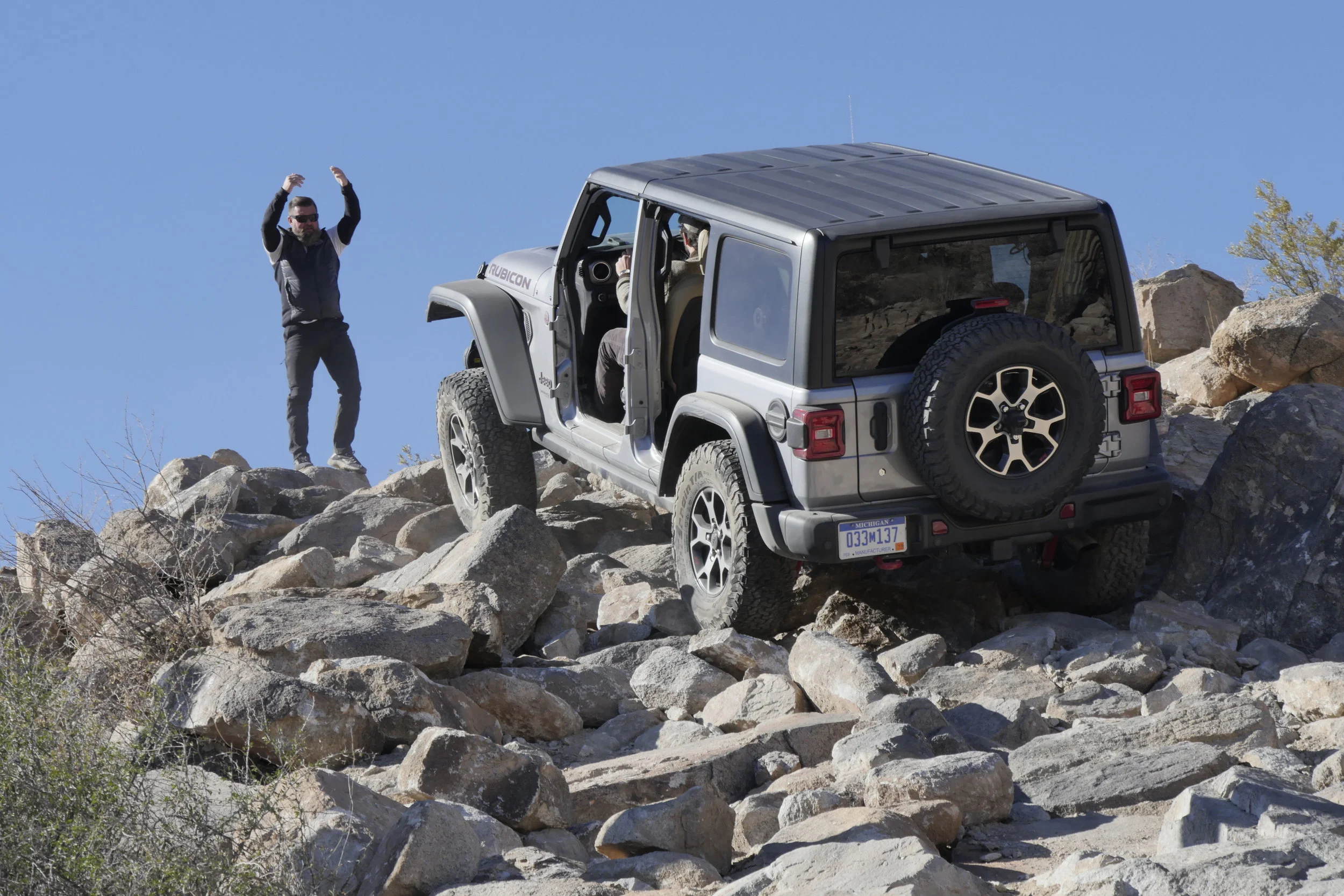Trust your spotter (if you trust your spotter)
Jim Horne guides a 2018 Wrangler Rubicon Unlimited up the demo course climb.
At the recent press launch of the new Jeep Wrangler JL, the organizers laid out an excellent driving course for the Rubicons to show off their capability, which is likely unmatched by any production four-wheel-drive vehicle on the planet. The course, in the rocks and hills of the Tortolita Mountains outside Tucson, included several challenging sections, and in particular one climb up a boulder-strewn hill that had several experienced journalists in the driver’s seats saying incredulously, “I’m going up that?”
At each section, spotters (or “marshallers” if you’re from outside the U.S.) were positioned to guide each vehicle through the dicey bits. It seems reasonable to assume that FCA would have made sure these guys knew what they were doing, right? And they did—those who watched them and followed their hand signals and guidance invariably made it through each section handily. But several drivers were apparently so freaked out by the boulder hill (or else so arrogant they assumed they didn’t need marshalling) that they took their eyes off the spotter and ignored hand signals to turn and shouted commands to slow down, fooling themselves into thinking that large applications of throttle were the only way they could get up that hill. As a result, a few wound up perched in precarious positions, having spat out rocks they could have crawled over, which required the spotters to crawl under the vehicles to reposition them. Finally a single driver managed to eject enough calf-sized boulders that the hill had to be shut down for the day to be rebuilt.
It’s axiomatic that a person standing in front of your vehicle has a much better view of where the front wheels are going than you do, no matter how experienced you are. (It’s also axiomatic that if he has already guided a couple dozen vehicles across the obstacle, he pretty much knows how to help you nail it the first time.) In situations where you must place your tires precisely to negotiate obstacles, a spotter is invaluable, as is a clear prior understanding of the visual commands to be given. Then, once you are committed to the line, you keep your eyes on the spotter, not over or around your hood where you won’t see anything of use anyway.
However, the corollary is, your spotter must know what he or she is doing, or the guidance could be worse than none at all. If you’re on a trail and come across a group negotiating an obstacle, and their spotter motions you forward, you’d be wise not to place your safety and the integrity of your vehicle in his hands until you’ve watched him guide others through and are satisfied of his skill. Also critical to spotting is that only one person should be doing it. If that same group has three or four people shouting and gesticulating at each driver, stay away.
If you are the marshaler, you have a responsibility to the driver to issue unmistakable instructions, and when possible they should be visual rather than vocal, as voices can be masked by engine and trail noise. Large movements with an arm and hand to indicate direction are better than small ones with a finger. Avoid confusing signals such as motioning “left” with your right arm arcing over your head or across your body. A closed fist or fists held up universally indicate “stop.” You can wave a driver forward and motion direction at the same time if necessary.
If close-up vocal commands for turning are necessary through the driver’s window, many experienced marshallers use “driver” and “passenger” to indicate, respectively, left or right. This is fine as long as you are in the U.S. with a left-hand-drive vehicle. However, I spend a lot of time in right-hand-drive countries (and own a right-hand-drive Land Rover here), so I prefer to use simple “right” and left” to indicate direction. The trick here is that if you are facing the driver it is your responsibility to make sure you indicate his or her right or left, not your own.
It’s also the responsibility of the spotter to make sure he can be seen by the driver. If you are spotting and can’t see the windshield of the vehicle you’re guiding, the driver cannot see you.

